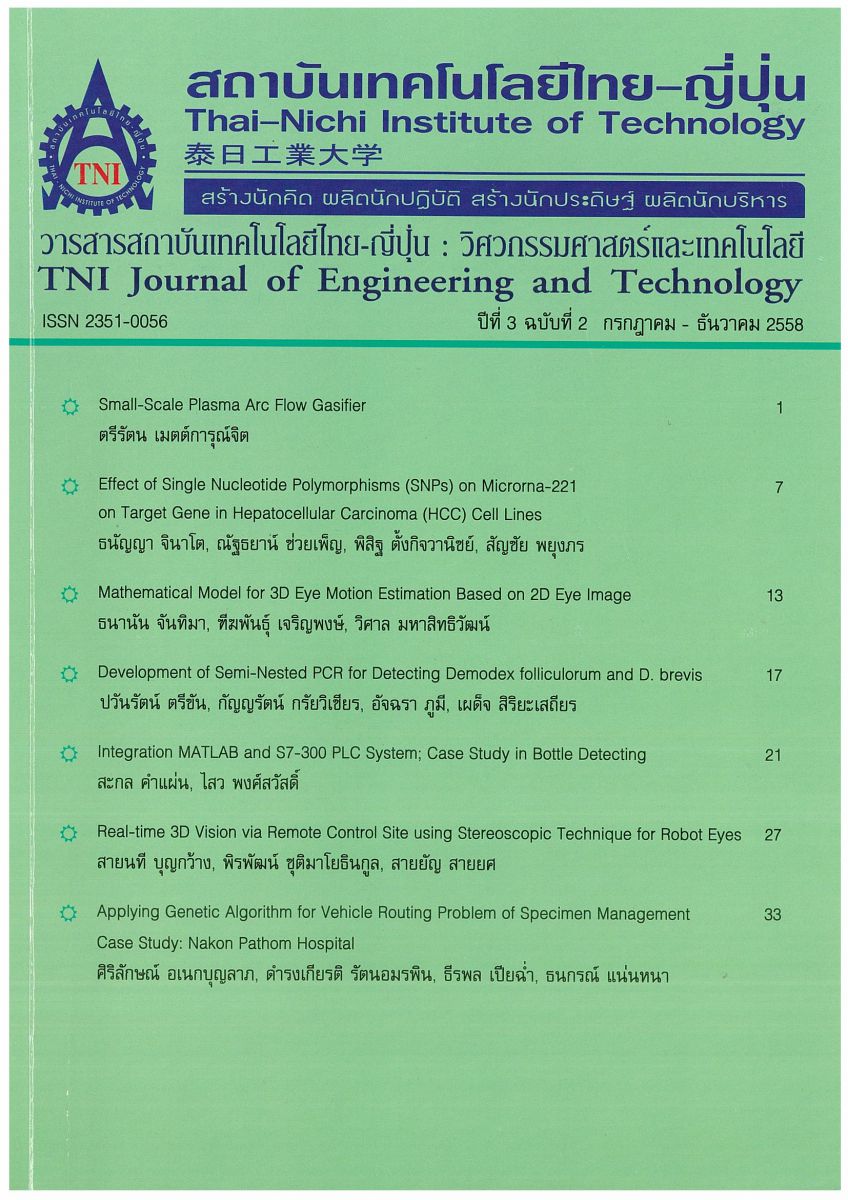The Study of Effects of Hydrogen Loading Time to the Fluctuation of FBG Wavelength
Main Article Content
Abstract
This paper studies effects of hydrogen loading time for four conditions, which control hydrogen loading pressure at 13 MPa to the fluctuation of FBG wavelength at final optical inspection process. Hydrogen loading technique is a major technique to enhance photosensitivity and refractive index of optic fiber. FBG reflective target at 9% of writing process leads to a small refractive index change and a small distribution of UV exposure time affect to the high stability of FBG wavelength. Therefore, the fluctuation of FBG wavelength at final optical inspection process was the a similar manner for four hydrogen loading times conditions.
Article Details
Article Accepting Policy
The editorial board of Thai-Nichi Institute of Technology is pleased to receive articles from lecturers and experts in the fields of engineering and technology written in Thai or English. The academic work submitted for publication must not be published in any other publication before and must not be under consideration of other journal submissions. Therefore, those interested in participating in the dissemination of work and knowledge can submit their article to the editorial board for further submission to the screening committee to consider publishing in the journal. The articles that can be published include solely research articles. Interested persons can prepare their articles by reviewing recommendations for article authors.
Copyright infringement is solely the responsibility of the author(s) of the article. Articles that have been published must be screened and reviewed for quality from qualified experts approved by the editorial board.
The text that appears within each article published in this research journal is a personal opinion of each author, nothing related to Thai-Nichi Institute of Technology, and other faculty members in the institution in any way. Responsibilities and accuracy for the content of each article are owned by each author. If there is any mistake, each author will be responsible for his/her own article(s).
The editorial board reserves the right not to bring any content, views or comments of articles in the Journal of Thai-Nichi Institute of Technology to publish before receiving permission from the authorized author(s) in writing. The published work is the copyright of the Journal of Thai-Nichi Institute of Technology.
References
Kenneth O. Hill and Gerald Meltz, “Fiber Bragg Grating Technology Fundamentals, Overview Joural of lightwave technology, Vol. 20, No.11, November 2002
Raman Kashyap, “Fiber Bragg Grating”, Elsevier press, P.15-45, 2010.
L. B. Fu, G. Tan, W. J. Xu, H. L. An, X. M. Cui, X. Z. Lin, and H. D. Liu, “Ultraviolet-initiated reactions of H2 with germonosilicate fibers and H2 concentration dependence of the Bragg wavelength of a fiber grating”, Vol. 25, No. 8, Optical Society of America, 2000.
Yuji Masuda, Mitsuo Nakamura, Chisa Komatsu, Keio Fujita, Makoto Yamauchi, Masanori Kimura, Yasuo Mizutani, Susumu Kimura, Yoshifumi Suzaki, Takashi Yokouchi, Kiyoshi Nakagawa,and Seiki Ejima, “Wavelength Evolution of Fiber Bragg Gratings”, Journal of lighwave technology, Vol. 22, No. 3, March 2004.
Kazuhiro Noguchi, Nori Shibata, Naoshi Uessugi, Yukiyasu Negishi “Loss Increase for Optical Fibers Exposed to Hydrogen Atmosphere”, Journal of Lightwave technology, No. 2, April 1985
Paul J. Lemaire “Reliability of optical fibers exposed to hydrogen : prediction of long-tern loss increase”, Optical Engineering, Vol. 30 No. 6, p. 780-789, June 1991.


